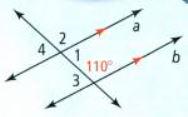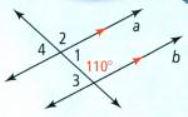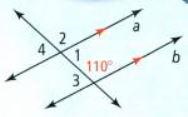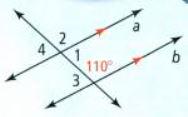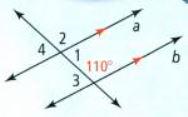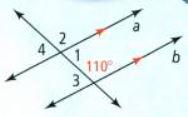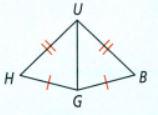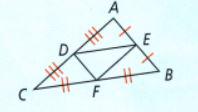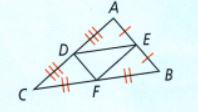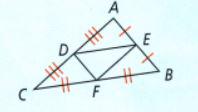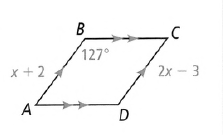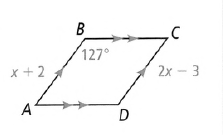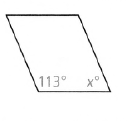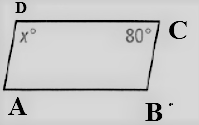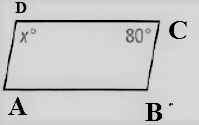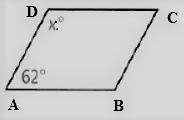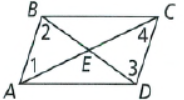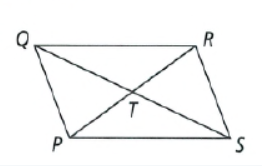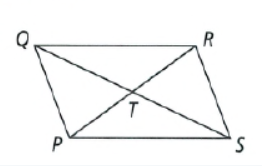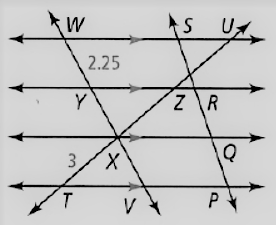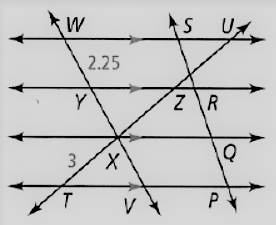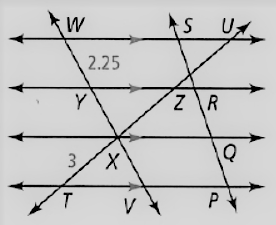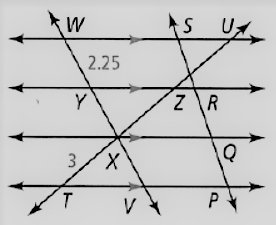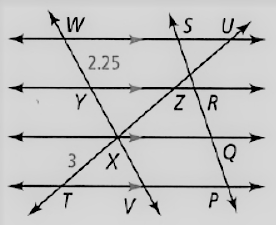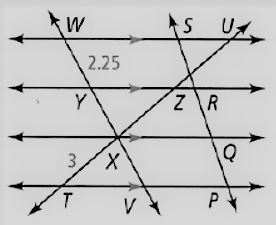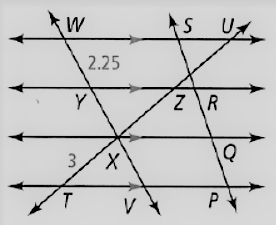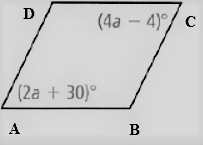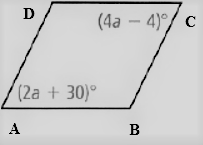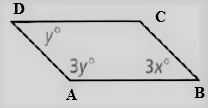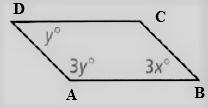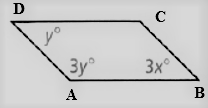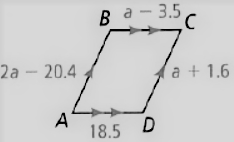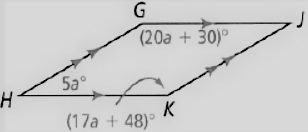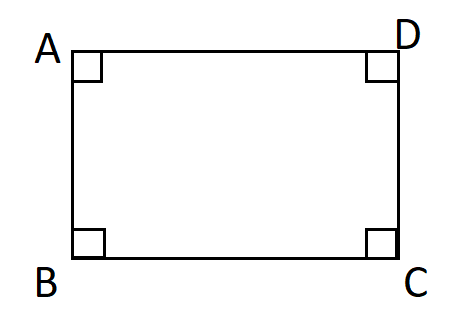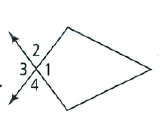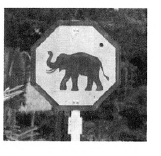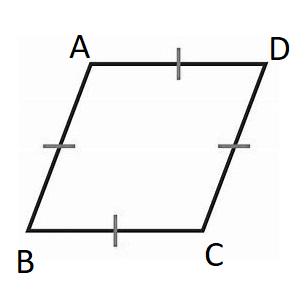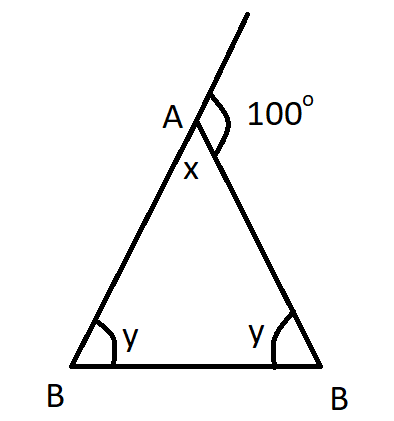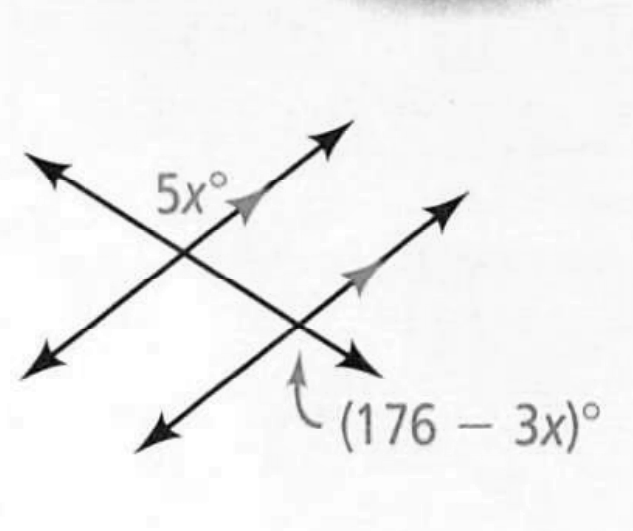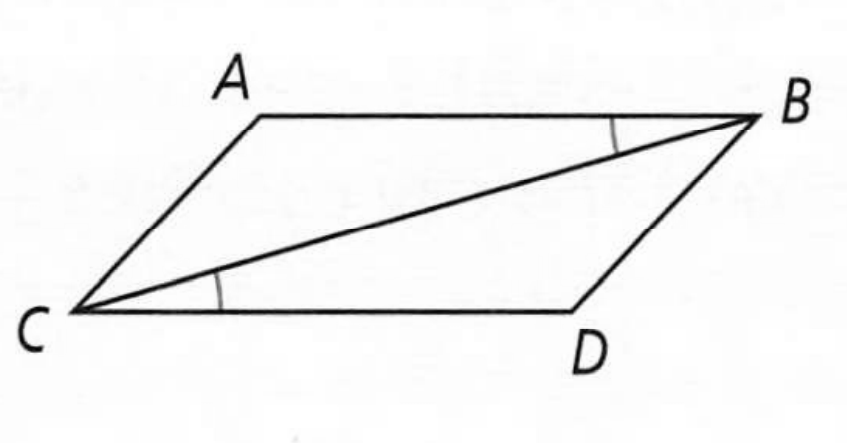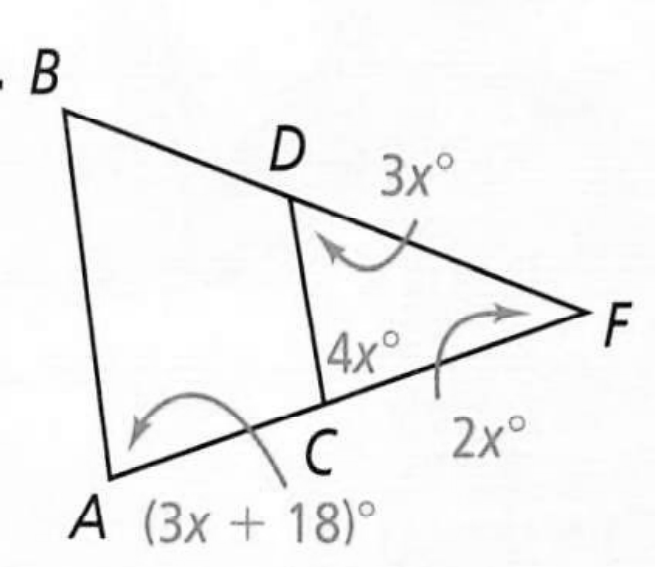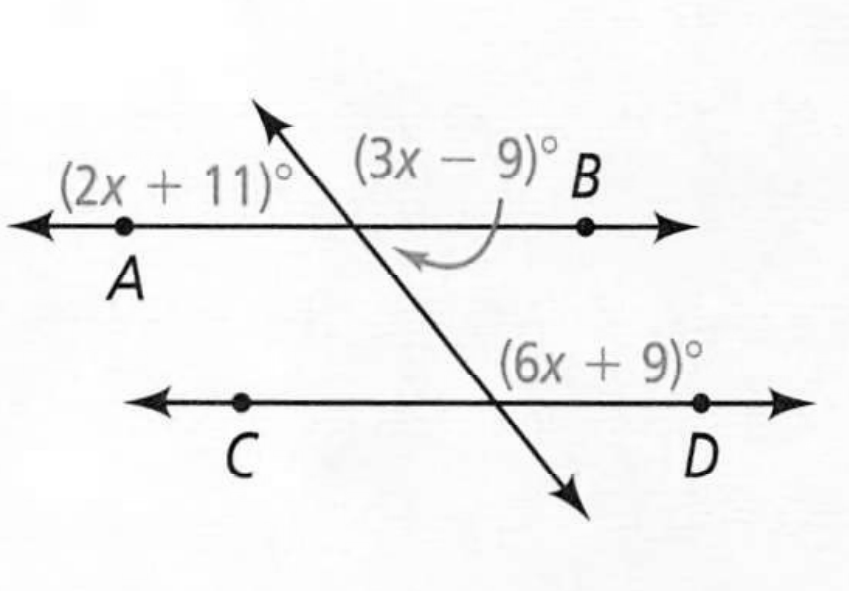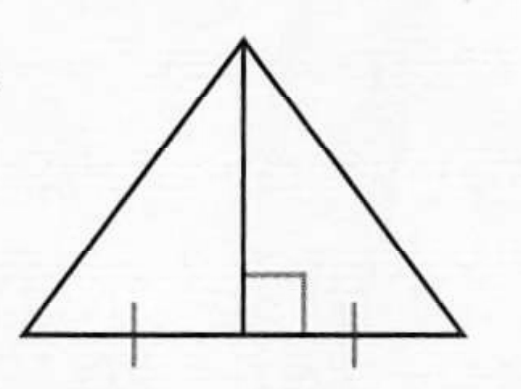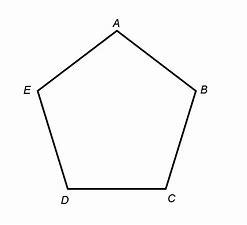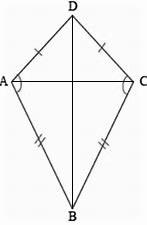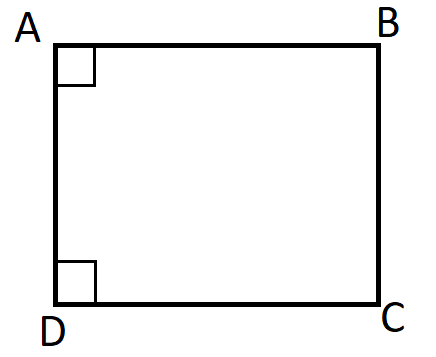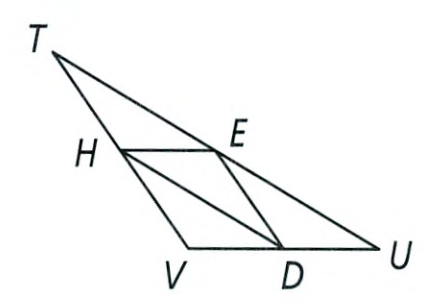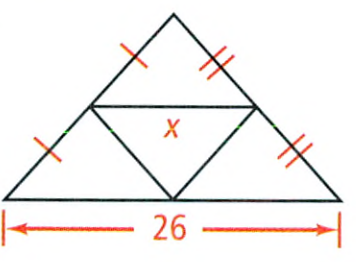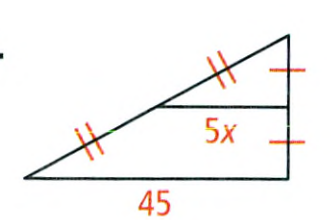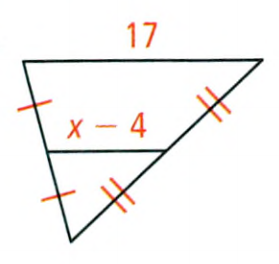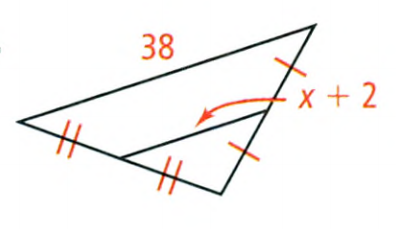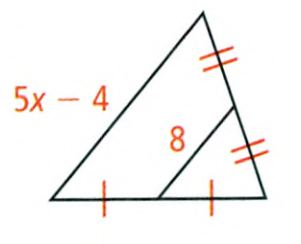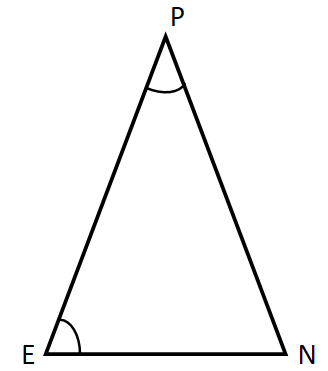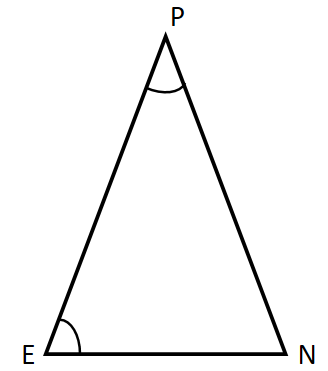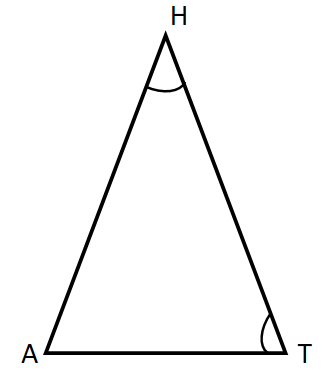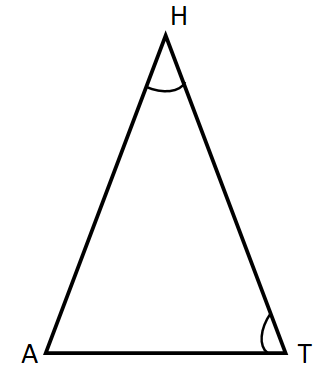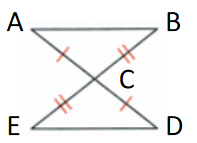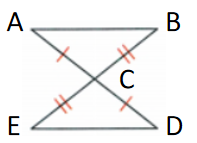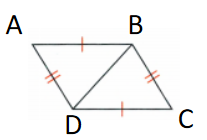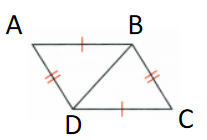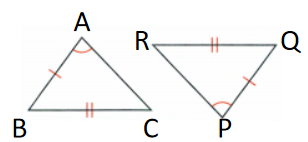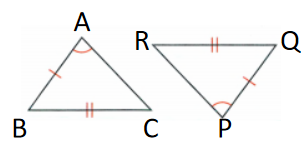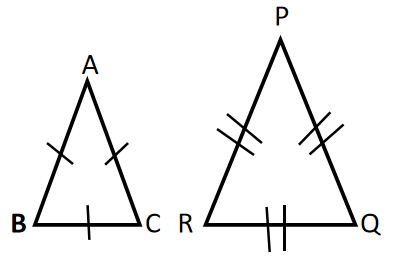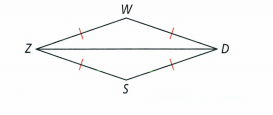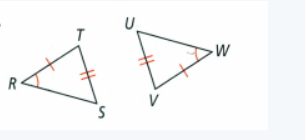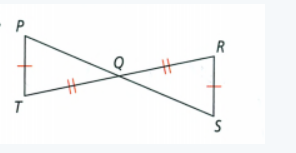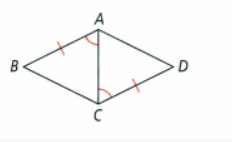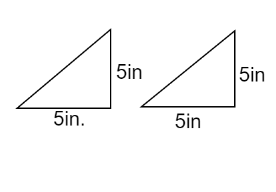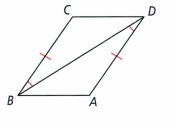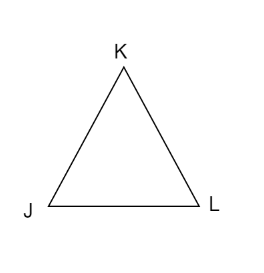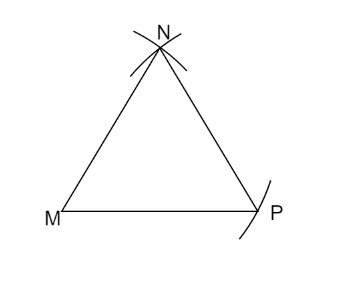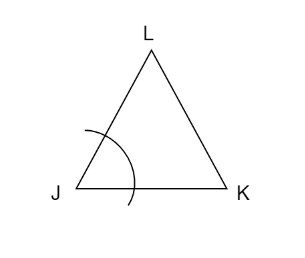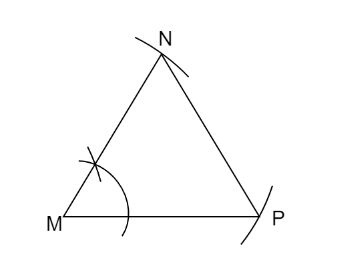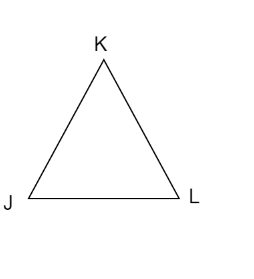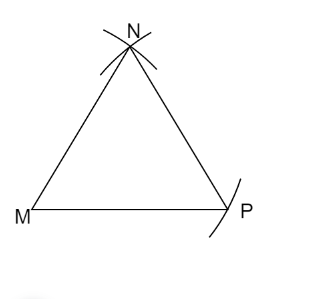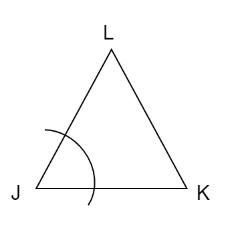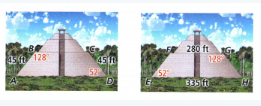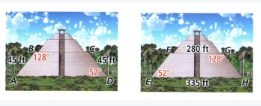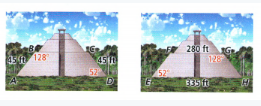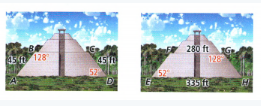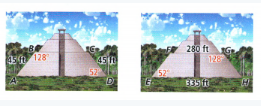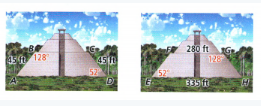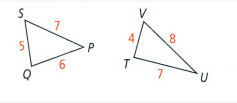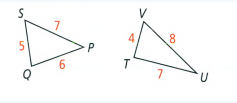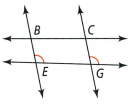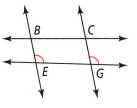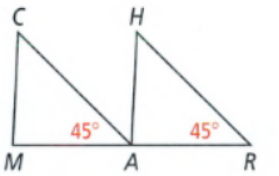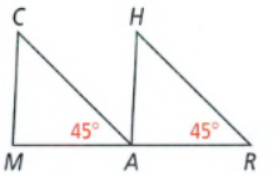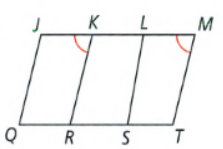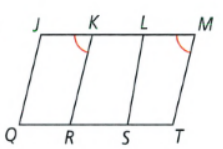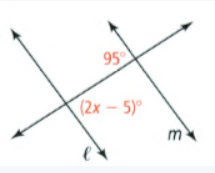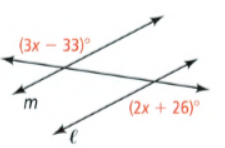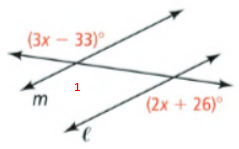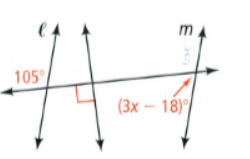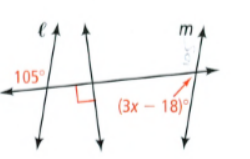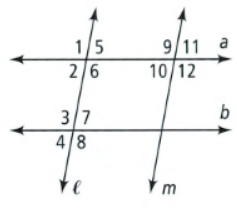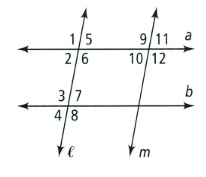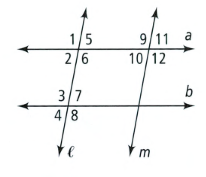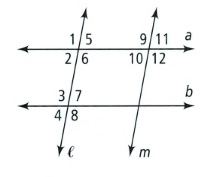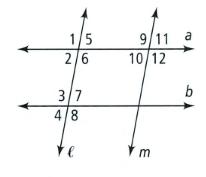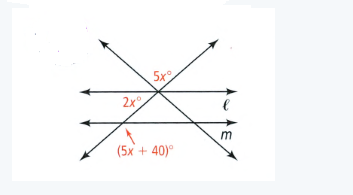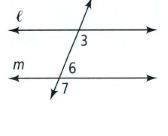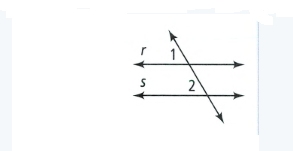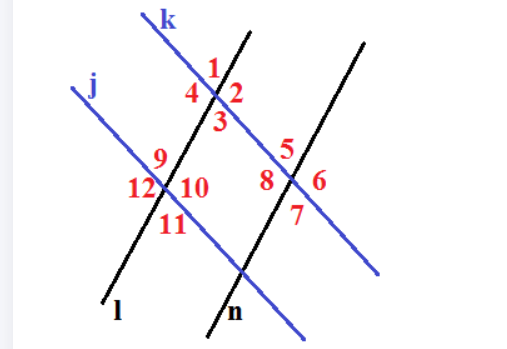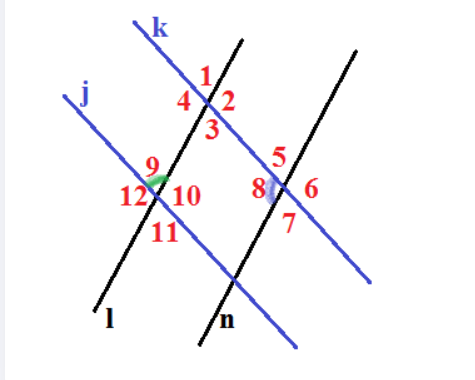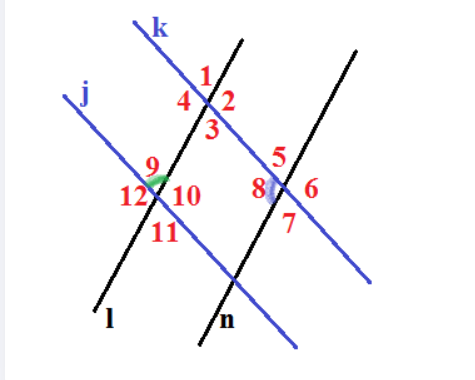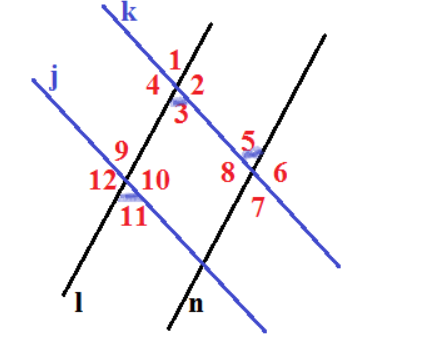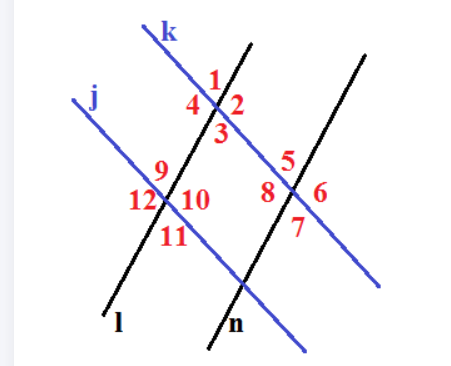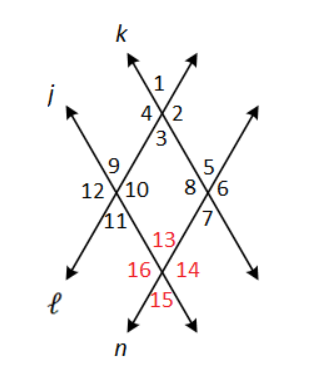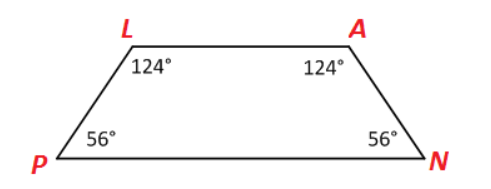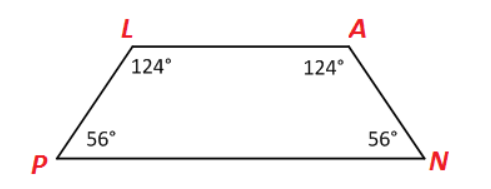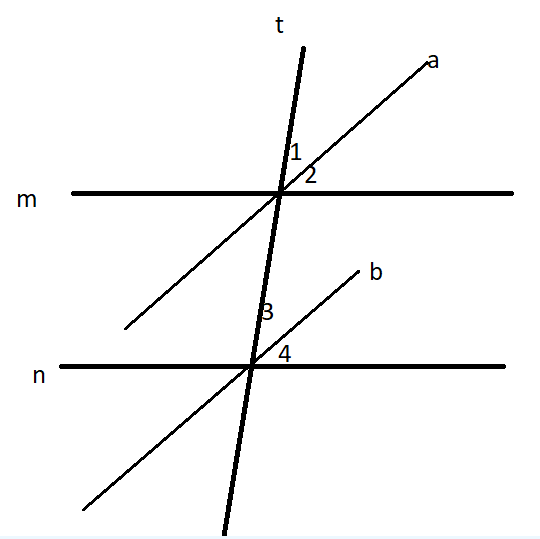Savvas Learning Co Geometry Student Edition Chapter 7 Similarity Exercise 7.1 Ratios And Proportions
Page 436 Exercise 1 Problem 1
We are given that a cellphone is 46mm wide and stands 84mm long.
We are required to find the ratio of the width to its length.
Here, we will divide the width by the length to get the answer.
From the given information, we have
L = 84mm
W = 46mm
Since both the measures are in the same units, we find the ratio as
Ratio = \(\frac{W}{L}\)
= \(\frac{46 \mathrm{~mm}}{84 \mathrm{~mm}}\)
= \(\frac{23}{42}\)
Hence the required ratio is, 23:42.
When, to the nearest millimeter, a cell phone is 84mm long and 46mm wide, the ratio of the width to the length is 23:42.
Page 436 Exercise 2 Problem 2
We are given that two angle measures are in the ratio 5:9.
We are required to write expressions for the two angle measures in terms of the variable x.
Here, we will equate the given ratio to the variable to get the expression.
Let us equate the given ratio of angles to the variable, to get
\(\frac{5}{9}\) = x
Now, multiplying both sides by 9, we get
\(\frac{5}{9}\) × 9 = x × 9
5 = 9x
Which is the required expression.
When two angle measures are in the ratio 5:9, expressions for the two angle measures in terms of the variable x is 5 = 9x.
Page 436 Exercise 3 Problem 3
We are given the proportion \(\frac{20}{z}\)= \(\frac{5}{3}\).
We are required to solve the given proportion.
Here, we will find the value of the variable involved to solve the proportion.
First we will cross multiply the numbers in the proportion, to get
20 × 3 = 5 × z
60 = 5z
Now, dividing throughout the equation by 5, we get
\(\frac{5z}{5}\) = \(\frac{60}{5}\)
z = 12
The solution of the given proportion \(\frac{5z}{5}\) = \(\frac{60}{5}\) is z = 12 , obtained using cross multiplication and simple arithmetic operations.
Page 436 Exercise 4 Problem 4
We are given the proportion \(\frac{a}{7}\) = \(\frac{13}{b}\)
We are required to find the ratio that completes the equivalent proportion

Here, we will use cross multiplication to the given proportion to get to the answer.
From the given proportion, using cross multiplication, we can write that
⇒ \(\frac{a}{7}\) = \(\frac{13}{b}\)
a × b = 13 × 7
Multiplying both sides of the equation by \(\frac{1}{13×b}\),we get
a × b × \(\frac{1}{13×b}\)
= 13 × 7 × \(\frac{1}{13×b}\)
⇒ \(\frac{a}{13}\) = \(\frac{7}{b}\)
The ratio which completes the given equivalent proportion is given by \(\frac{a}{13}\) = \(\frac{7}{b}\), which is obtained from the given value \(\frac{a}{7}\) = \(\frac{13}{b}\)
Page 436 Exercise 4 Problem 5
We are given the proportion\(\frac{a}{7}\) = \(\frac{13}{b}\).
We are required to find the ratio that completes the equivalent proportion

Here, we will use subtraction from the given proportion to get to the answer.
The ratio which completes the given equivalent proportion is given by. \(\frac{a-7}{7}=\frac{13-b}{b}\), which is obtained from the given value . \(\frac{a}{7}\) = \(\frac{13}{b}\)
Page 436 Exercise 4 Problem 6
We are given the proportion \(\frac{a}{7}\) = \(\frac{13}{b}\).
We are required to find the ratio that completes the equivalent proportion

Here, we will take reciprocal of the given proportion to get to the answer.
For the given proportion
\(\frac{a}{7}\) = \(\frac{13}{b}\)
We can take the reciprocal to get
\(\frac{7}{a}\) = \(\frac{b}{13}\)
Which is the required equivalent proportion.
The ratio which completes the given equivalent proportion is given by \(\frac{7}{a}\) = \(\frac{b}{13}\) , which is obtained from the given value \(\frac{7}{a}\) = \(\frac{b}{13}\)
Page 436 Exercise 5 Problem 7
In the given question, we have been given that the length of the sides of the triangle are in the extended ratio 3:6:7.
We need to find two possible sets of side lengths, in inches, for the triangle.
First, we will assume the length side and then put it into the expended ratio.
Let us assume that x be the length of the sides of the triangle.
Then we get the length of the sides of the triangle as 3x,6x,7x.
Let we assume x = 1 , then the sides of the triangle will be 3(1),(6(1),7(1) = 3,6,7(all in inches).
Let we assume x = 2 , then the sides of the triangle will be 3(2),6(2),7(2)=6,12,14 (all in inches).
So, the two sets will be 3,6,7 and 6,12,14 (all in inches).
The lengths of the sides of a triangle are in the extended ratio 3:6:7 then two possible sets of side lengths, in inches, for the triangle will be: 3in,6in,7in 6in,12in,14in
Page 436 Exercise 6 Problem 8
In the given question, we have been given the solution of the proportion shown below.

We need to tell the error done in the solution of the proportion.
We will do the proportion and then multiply numbers diagonally to find the error.
Here we will find the proportion of \(\frac{7}{3}\) = \(\frac{4}{x}\).
We will multiply the numbers diagonally, we will get
7x = 12
x = \(\frac{12}{7}\)
So the correct answer is x = \(\frac{12}{7}\).
And the error is in multiplying the number diagonally.
The correct solution is x = \(\frac{12}{7}\) not \(\frac{28}{3}\) which is the error in the solution of the proportion shown.

Page 436 Exercise 7 Problem 9
We have been asked that what is a proportion that has means 6and 18 and extremes 9 and 12.
Since we know that when the proportion is stated with colons, the means are the two words that are closest together and when the proportion is stated with colons.
The extremes are the words in the proportion that are the farthest apart.
Thus the proportion will be 9:6 = 18:12.
As the first and the last number in a proportion are extremes and the middle two are the means.
A proportion that has means 6 and 18 and extremes 9 and 12 is 6:9 = 18:12.
Page 436 Exercise 8 Problem 10
In the question, we have been given that the height of a table tennis net is 6in. and the height of a tennis net is 3ft.
We have been asked to write the ratio of the first measurement to the second measurement.
We will convert the height into inches and then divide them.
We have been given that the height of a table tennis net is 6in and the height of a tennis net is 3ft.
We know that 1ft = 12in.
Thus, we will get 3ft = 3 × 12in = 36in
Now for the ratio, we will divide the height, we will get 6in
36in = \(\frac{1}{6}\)
= 1:6
So, the ratio is 1:6.
The ratio of the first measurement to the second measurement of the height of a table tennis net is 6in and the height of a tennis net is 3ft is 1:6.
Page 436 Exercise 9 Problem 11
We have been given that a baseball team played 154 regular-season games and the ratio of the number of games they won to the number of games they lost was \(\frac{5}{2}\)
We have been asked that how many games did they win and also how many games did they lose.
We will assume x and then use the given ratio to find the result.
Given to us that a baseball team played 154 regular-season games and the ratio of the number of games they won to the number of games they lost was 5:2.
Let the number of games be x, then the number of games they won will be 5x and the number of games they lose will be 2x.
Then we can write
5x + 2x = 154
7x = 154
x = \(\frac{154}{7}\)
x = 22
Then the number of games they won will be 5 × 22 = 110.
And the number of games they lose will be 2 × 22 = 44.
A baseball team played 154 regular-season games and the ratio of the number of games they won to the number of games they lost was \(\frac{5}{2}\) then 110 games did they win and 44 games did they lose.
Page 436 Exercise 10 Problem 12
We have been given that the measures of two supplementary angles are in the ratio 5:7
We need to find the measure of the larger angle.
By using the sum of supplementary angles, we will find the result.
The measure of two supplementary angles is in the ratio 5:7.
Let us assume the measure of angle be x.
Then we can write 5x + 7x = 180°
Solving it, we will get
12x = 180
x = \(\frac{180}{12}\)
x = 15
Then the measure of angles will be
5 × 15 = 75
7 × 15 = 95
So, the measures of the angle of the larger angle is 95°.
The measures of two supplementary angles are in the ratio 5:7 then the measure of the larger angle is 95°.
Page 436 Exercise 11 Problem 13
In the given question, we have been given a proportion \(\frac{1}{3}\)= \(\frac{x}{12}\).
We have e been asked to solve the given proportion.
Using cross multiplication, we will solve it.
Given to us a proportion \(\frac{1}{3}\)= \(\frac{x}{12}\).
By using the cross-multiplication, we can write
1 × 12 = 3 × x
12 = 3x
\(\frac{12}{3}\) = x
4 = x or x = 4
So, the solution of the given proportion is x = 4.
The solution of the given proportion \(\frac{1}{3}\)= \(\frac{x}{12}\) is x = 4
Page 436 Exercise 12 Problem 14
From the given question, we have a proportion \(\frac{9}{5}\)= \(\frac{3}{x}\).
We have e been asked to solve the given proportion.
Using cross multiplication, we will solve it.
Given to us a proportion \(\frac{9}{5}\)= \(\frac{3}{x}\).
By using the cross-multiplication, we can write
9 × x = 3 × 5
9x = 15
x = \(\frac{15}{9}\)
x = \(\frac{5}{3}\)
So, the solution of the given proportion is x = \(\frac{5}{3}\)
The solution of the given proportion \(\frac{9}{5}\)= \(\frac{3}{x}\) is x = \(\frac{5}{3}\)
Page 436 Exercise 13 Problem 15
In the given question, we have been given a proportion \(\frac{4}{x}\)= \(\frac{5}{9}\).
We have e been asked to solve the given proportion.
Using cross multiplication, we will solve it.
Given to us a proportion \(\frac{4}{x}\)= \(\frac{5}{9}\)
By using the cross-multiplication, we can write
4 × 9 = 5 × x
36 = 5x
\(\frac{36}{5}\) = x
So, the solution of the given proportion is \(\frac{36}{5}\).
The solution of the given proportion \(\frac{4}{x}\)= \(\frac{5}{9}\) is \(\frac{36}{5}\).
Page 436 Exercise 14 Problem 16
We have been given a proportion \(\frac{y}{10}\)= \(\frac{15}{25}\).
We have e been asked to solve the given proportion.
Using cross multiplication, we will solve it.
Given to us a proportion \(\frac{y}{10}\)= \(\frac{15}{25}\).
By using the cross-multiplication, we can write
y × 25 = 15 × 10
25y = 150
y = \(\frac{150}{25}\)
y = 6
So, the solution of the given proportion is 6.
The solution of the given proportion \(\frac{y}{10}\)= \(\frac{15}{25}\).
Page 436 Exercise 15 Problem 17
In this question, we are given the proportion \(\frac{9}{24}\) = \(\frac{12}{n}\)
We need to solve each proportion.
We multiply the numerator of the first fraction with the denominator of the second fraction and the numerator of the second fraction with the denominator of the first fraction.
We are given the proportion \(\frac{9}{24}\) = \(\frac{12}{n}\)
We will solve by cross multiplication , we get the value of n
\(\frac{9}{24}\) = \(\frac{12}{n}\)
12 × 24 = 9 × n
\(\frac{288}{9}\) = n
32 = n or n = 32
The solution of the given proportion \(\frac{9}{24}\) = \(\frac{12}{n}\) after solving using cross multiplication got the value of n = 32.
Page 436 Exercise 16 Problem 18
In this question, we are given the proportion \(\frac{11}{14}\) = \(\frac{b}{21}\).
We need to solve each proportion.
We multiply the numerator of the first fraction with the denominator of the second fraction and the numerator of the second fraction with the denominator of the first fraction.
We are given the proportion \(\frac{11}{14}\) = \(\frac{b}{21}\)
We will solve by cross multiplication, we get the value of b.
\(\frac{11}{14}\) = \(\frac{b}{21}\)
11 × 21 = 14 × b
\(\frac{231}{14}\) = b
16.5 = b
The solution of the given proportion \(\frac{11}{14}\) = \(\frac{b}{21}\) after solving using cross multiplication got the value of b = 16.5.
Page 436 Exercise 17 Problem 19
In this question, we are given the proportion \(\frac{3}{5}\) = \(\frac{6}{x+3}\)
We need to solve each proportion.
We multiply the numerator of the first fraction with the denominator of the second fraction and the numerator of the second fraction with the denominator of the first fraction.
We are given the proportion \(\frac{3}{5}\) = \(\frac{6}{x+3}\)
We will solve proportion using cross multiplication, we get the value of x
\(\frac{3}{5}\) = \(\frac{6}{x+3}\)
(x + 3)3 = 6 × 5 3x + 9 = 30
After simplifying, we get
3x = 30 − 9
x = \(\frac{30−9}{3}\)
x = \(\frac{21}{3}\)
x = 7
The solution of the given proportion \(\frac{3}{5}\) = \(\frac{6}{x+3}\) after solving using cross multiplication got the value of x = 7.
Page 436 Exercise 18 Problem 20
In this question, we are given the proportion \(\frac{y+7}{9}=\frac{8}{5}\)
We need to solve each proportion.
We multiply the numerator of the first fraction with the denominator of the second fraction and the numerator of the second fraction with the denominator of the first fraction.
We are given the proportion \(\frac{y+7}{9}=\frac{8}{5}\)
We will solve by cross multiplication, we get the value of y
⇒ \(\frac{y+7}{9}=\frac{8}{5}\)
(y + 7)5 = 8 × 9
5y + 35 = 72
After solving, we get
5y = 72 − 35
5y = 37
y = \(\frac{37}{5}\)
y = 7.4
The solution of the given proportion \(\frac{y+7}{9}=\frac{8}{5}\) after solving using cross multiplication got the value of y = 7.4.
Page 436 Exercise 19 Problem 21
In this question, we are given the proportion \(\frac{5}{x-3}=\frac{10}{x}\)
We need to solve each proportion.
We multiply the numerator of the first fraction with the denominator of the second fraction and the numerator of the second fraction with the denominator of the first fraction.
We are given the proportion \(\frac{5}{x-3}=\frac{10}{x}\)
We will solve by cross multiplication, we get the value of x
⇒ \(\frac{5}{x-3}=\frac{10}{x}\)
5 × x = 10(x − 3)
5x = 10x − 30
30 = 10x − 5x
After solving, we get
30 = 5x
\(\frac{30}{5}\) = x
6 = x or x = 6
The solution of the given proportion \(\frac{5}{x-3}=\frac{10}{x}\)after solving using cross multiplication got the value of x = 6.
Page 437 Exercise 20 Problem 22
In this question, we are given the diagram \(\frac{a}{b}=\frac{3}{4}\)
We need to complete each statement \(\frac{b}{4}=\frac{?}{?}\)
We multiply the numerator of the first fraction with the denominator of the second fraction and the numerator of the second fraction with the denominator of the first fraction.
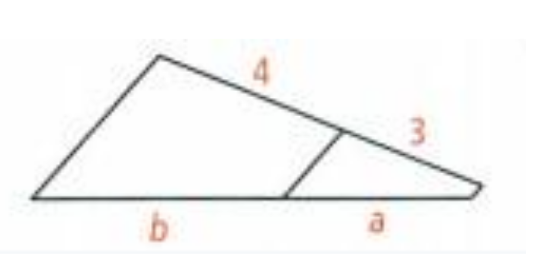
We are given the following information
⇒ \(\frac{a}{b}=\frac{3}{4}\)
To find the value of \(\frac{b}{4}\) we must multiply the numbers diagonally, we get
⇒ \(\frac{a}{b}=\frac{3}{4}\)
4 × a = 3 × b
Now we need to divide the equation with 4, we get
\(\frac{4a}{4}\) = \(\frac{3b}{4}\)
a = \(\frac{3b}{4}\)
And now with 3, we get
\(\frac{a}{3}=\frac{3 b}{4 \times 3}\)
⇒ \(\frac{a}{3}=\frac{b}{4}\)
The solution of the given expression \(\frac{a}{b}\) = \(\frac{3}{4}\) using multiply the numbers diagonally is\(\frac{b}{4}=\frac{a}{3}\).
Page 437 Exercise 21 Problem 23
In this question, we are given the diagram \(\frac{a}{b}=\frac{3}{4}\)
We need to complete each statement \(\frac{7}{4}=\frac{?}{?}\)
We multiply the numerator of the first fraction with the denominator of the second fraction and the numerator of the second fraction with the denominator of the first fraction.
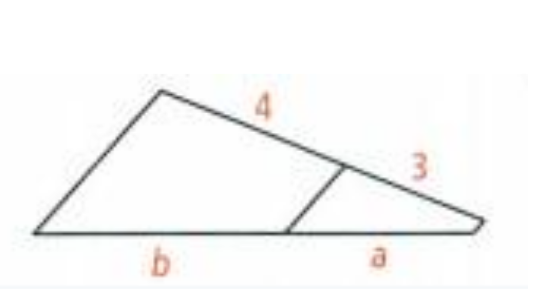
We are given the following information
⇒ \(\frac{a}{b}=\frac{3}{4}\)
To find the value of \(\frac{7}{4}\)
We need to add1 to both sides of the equation, we get
⇒ \(\frac{a}{b}=\frac{3}{4}\)
⇒ \(\frac{a}{b}+1=\frac{3}{4}+1\)
⇒ \(\frac{a+b}{b}=\frac{3+4}{4}\)
⇒ \(\frac{a+b}{b}=\frac{7}{4}\)
The solution of the given expression \(\frac{a}{b}=\frac{3}{4}\) by adding1 to both sides of the equation is \(\frac{7}{4}=\frac{a+b}{b}\).

